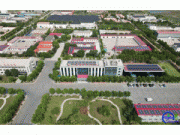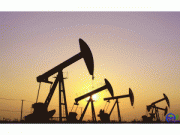免职声明:本网站为公益性网站,部分信息来自网络,如果涉及贵网站的知识产权,请及时反馈,我们承诺第一时间删除!
This website is a public welfare website, part of the information from the Internet, if it involves the intellectual property rights of your website, please timely feedback, we promise to delete the first time.
电话Tel: 19550540085: QQ号: 929496072 or 邮箱Email: Lng@vip.qq.com
摘要:十年来,成品油产能扩张、供需变化、价格走势、政策导向等均发生显著变化。十年来,成品油产能扩张进度、供需格局变化、价格走势、国家政策导向等诸多方面均发生了较显著的变化。2024年是“十四五”承上启下的关键年,2025年炼能将达峰。伴随着合规性政策趋紧、新能..
|
十年来,成品油产能扩张、供需变化、价格走势、政策导向等均发生显著变化。
大炼化逐步落地 2014—2023年十年间,国内常减压产能呈现震荡上涨态势,由2014年的7.64亿吨一路攀升至2023年的9.84亿吨,十年间增加了2.2亿吨。中国一次产能复合增长率为2.85%。产能增长主要集中在2019—2021年。大炼化集中投产,是一次产能快速增长的主要推手。2022年,炼油能力首次出现下降,主要因为炼油企业整合效果显露,东北、新疆及华南闲置炼能增多,叠加山东等地部分炼厂拆除,导致炼厂数量大幅收缩。2023年,产能增长主要来自京博石化在海南新建炼厂。2023年,中国共有162家炼厂,数量较2022年下降1.82%,但原油总加工能力约为9.84亿吨/年,较2022年上涨0.18%。目前,中国的炼油能力领跑全球,原油一次加工能力排名全球第一。从分布区域来看,主要在华东、华南及东北地区,占据沿海优势。其中,华东地区占总产能的比例为44.69%。汽柴油消费增速放缓,倒逼炼厂调整汽柴油产出比例,以此缓解供需压力。国家统计局消费数据在2018—2021年出现回落,与产量下降趋势一致。从隆众消费数据来看,消费量在2018年、2020年及2022年,同比出现0.69%、2.37%、8.61%的降幅。这与当时的汽柴油消费需求情况吻合。2020年和2022年,受到当时的疫情影响,汽柴油消费量显著下滑。2023年以来,随着疫情防控全面放开,汽车出行量迎来了爆发式增长。即便一定程度上受到新能源汽车冲击,但汽油消费表现依然强劲。从交通、物流、PMI等各项指标数据来看,均显示现阶段柴油市场新增需求不足,内生动力需要增强。成品油行业集中度较高,产销市场份额主要集中在主营。从产能分布来看,主营产能为1.42亿吨、民营产能为0.84亿吨。主营占比达到62.83%,占据主导地位。 成品油供大于求 从汽油消费结构来看,2023年,交通运输、仓储和邮政业在汽油应用领域占据比例最大,达到总消费结构的44%。2023年,全国汽车保有量达到3.36亿辆,同比增长5.73%。受惠于鼓励消费乘用车优惠政策,年内汽车销量保持良好势头。汽车保有量的稳步增长,为国内汽油终端消费提供了强有力的支撑。新能源汽车保有量达到2041万辆,占汽车总量的6.07%;年内新注册登记新能源汽车743万辆,同比增长38.76%。2023年,受疫情防控政策放宽刺激,交通运输及邮政业恢复明显。但是,2023年内新能源汽车增长趋势迅猛,且应用领域集中在出租车等公共交通方面,对汽油消费替代率明显增强,一定程度上抑制了交通运输占比的提升。受到疫情防控全面放开影响,居民出行意愿增加,消费比例同比小幅上涨。建筑业及工业领域消费因整体表现低迷,消费比例小幅收缩。其他行业消费比例基本未变。从柴油消费结构来看,2023年,柴油消费在交通运输领域占比为65%,属于柴油产品最大的消费领域。农林牧副渔领域占消费总量的11%,用于工业、建筑业及生活领域的消费占柴油消费总量的比例分别为9%、3%和5%,其他行业柴油消费总量占比则为7%。柴油消费领域中,仓储物流需求是其主要来源。2023年,受地产萧条影响,柴油在工程基建领域消费低于往年。后续,工业、农林牧渔、生活消费领域的柴油需求均进入下滑区间。 价格承压前行 近十年,中国柴油市场均价基本呈现“W”走势。汽油价格低点出现在2020年5月中旬为4973元/吨,价格高点出现在2022年3月初为10253元/吨。柴油价格低点出现在2016年4月初为4210元/吨,价格高点出现在2022年11月为9133元/吨。2014—2016年,我国新增产能增多但需求增速平缓,市场资源供过于求显现,成品油价格接连下挫。其间,受国际油价下行及炼油结构性过剩等因素影响,汽柴油行情同步转跌,柴油价格更是于2016年4月跌至近十年来的最低值。直至2017年下半年,成品油市场才在成本端支撑增强、税票新政带动,以及国内供求关系趋紧提振下涨势再起。但2018年10月开始,伴随原油价格一路走跌,市场购销积极性明显转弱。另外,叠加2019年国内千万吨级大炼化产能集中释放,国内供需压力日益凸显,成品油价格再次转入下调通道。2020年,新冠疫情危机肆虐全球,成本端塌陷引发成品油价格断崖式走跌,下游消费几近停滞,汽油价格跌至十年最低。2021—2022年间,随着原油走强,疫情管控陆续放宽,消费预期不断向好发展,汽柴油价格均于2022年创下近十年新高。2023年以来,国际地缘不稳,成本面波动明显加剧,部分市场利好预期提前透支,成品油行情始终承压前行。 行业何去何从? 成品油行业面临的主要问题,集中在生产方面的供需过剩矛盾下炼厂的油化转型问题。传统中小型独立炼厂产品工艺单一,且转型所需资金缺口大,转型难度较高,后续面临市场竞争愈发激烈。从当前生产情况看,独立炼厂面临原油配额紧张、原料不足等问题。但是,随着独立炼厂油品质量提升,与主营炼厂汽柴油价差不断缩窄,两者客户群体亦开始出现重叠和转换,使得低价不再是独立炼厂的优势,高质也不再是主营炼厂所独有。贸易方面的问题,多集中在利润及税务方面。市场供需过剩导致价格竞争激烈、价格透明化、利润空间收窄。另外,成品油税务监管日趋严格,但中下游参与者众多,难以实现全方位覆盖,部分不合规现象依然存在,劣币驱逐良币导致合规贸易商生存艰难。 In the past decade, the expansion of refined oil production capacity, changes in supply and demand, price trends, and policy guidance have all undergone significant changes. In the past ten years, significant changes have taken place in many aspects such as the expansion progress of refined oil production capacity, changes in supply and demand patterns, price trends, and national policy guidance. 2024 is a key year for the "14th Five-Year Plan", and the refining energy will peak in 2025. With the tightening of compliance policies, the acceleration of the new energy industry, and the increasing geographical issues, where will the refined oil industry go? Great refining and chemical gradually landing During the decade 2014-2023, the domestic normal and vacuum capacity showed an upward trend, climbing from 764 million tons in 2014 to 984 million tons in 2023, an increase of 220 million tons over the decade. The compound growth rate of China's primary production capacity is 2.85%. Capacity growth is mainly concentrated in 2019-2021. The centralized production of large refining and chemical is the main driving force for the rapid growth of primary production capacity. In 2023, capacity growth will mainly come from Jingbo Petrochemical's new refinery in Hainan. In 2023, China has a total of 162 refineries, a decrease of 1.82% from 2022, but the total crude oil processing capacity is about 984 million tons/year, an increase of 0.18% from 2022. At present, China's refining capacity leads the world, and its crude oil primary processing capacity ranks first in the world. From the distribution area, mainly in East China, South China and northeast China, occupy the coastal advantage. Among them, East China accounted for 44.69% of the total production capacity. Slower growth in gasoline and diesel consumption has forced refiners to adjust the proportion of gasoline and diesel output to ease pressure on supply and demand. The consumption data of the National Bureau of Statistics fell back in 2018-2021, in line with the declining trend of production. From the perspective of Lonzhong consumption data, consumption in 2018, 2020 and 2022, there was a year-on-year decline of 0.69%, 2.37% and 8.61%. This was consistent with the consumption demand for gasoline and diesel at that time. In 2020 and 2022, due to the impact of the epidemic at that time, the consumption of gasoline and diesel has declined significantly. Since 2023, with the full liberalization of epidemic prevention and control, the number of car trips has ushered in explosive growth. Even if the impact of new energy vehicles to a certain extent, gasoline consumption is still strong. From the transportation, logistics, PMI and other indicators, all show that the new demand in the diesel market is insufficient at this stage, and the internal power needs to be enhanced. The concentration of refined oil industry is high, and the market share of production and sales is mainly concentrated in the main business. From the perspective of production capacity distribution, the main production capacity is 142 million tons, and the private production capacity is 84 million tons. The main business accounted for 62.83%, occupying a dominant position. The supply of refined oil products exceeds the demand From the perspective of gasoline consumption structure, in 2023, the transportation, warehousing and postal industries occupy the largest proportion in the field of gasoline application, reaching 44% of the total consumption structure. In 2023, the number of cars in the country will reach 336 million, an increase of 5.73% year-on-year. Benefiting from preferential policies to encourage consumption of passenger cars, car sales maintained a good momentum during the year. The steady growth of car ownership has provided a strong support for domestic gasoline terminal consumption. The number of new energy vehicles reached 20.41 million, accounting for 6.07% of the total. During the year, 7.43 million new energy vehicles were newly registered, a year-on-year increase of 38.76%. In 2023, stimulated by the relaxation of epidemic prevention and control policies, the transportation and postal industries have recovered significantly. However, in 2023, the growth trend of new energy vehicles is rapid, and the application field is concentrated in public transportation such as taxis, and the substitution rate of gasoline consumption is significantly enhanced, which inhibits the increase of the proportion of transportation to a certain extent. Affected by the comprehensive liberalization of epidemic prevention and control, residents' willingness to travel has increased, and the proportion of consumption has increased slightly year-on-year. Construction and industrial consumption due to the overall sluggish performance, the proportion of consumption contracted slightly. The proportion of consumption in other industries remained basically unchanged. From the perspective of diesel consumption structure, in 2023, diesel consumption in the field of transportation accounted for 65%, which belongs to the largest consumption area of diesel products. The fields of agriculture, forestry, animal husbandry and fishery accounted for 11% of the total consumption, the consumption of industry, construction and life accounted for 9%, 3% and 5% of the total consumption of diesel, and the total consumption of diesel in other industries accounted for 7%. In the field of diesel consumption, the demand for warehousing and logistics is its main source. In 2023, affected by the real estate depression, diesel consumption in the field of engineering infrastructure is lower than in previous years. Subsequently, the diesel demand in industry, agriculture, forestry, animal husbandry and fishery, and living consumption areas all entered the declining range. Price pressure ahead In the past ten years, the average price of diesel oil in China has basically shown a "W" trend. The low price of gasoline was 4,973 yuan/ton in mid-May 2020, and the high price was 10,253 yuan/ton in early March 2022. The low price of diesel oil was 4,210 yuan/ton in early April 2016, and the high price was 9,133 yuan/ton in November 2022. From 2014 to 2016, China's new production capacity increased but the growth rate of demand was gentle, the oversupply of market resources appeared, and the price of refined oil products fell one after another. In the meantime, affected by factors such as the decline in international oil prices and the structural surplus of refining, the gasoline and diesel prices fell simultaneously, and diesel prices fell to the lowest value in nearly a decade in April 2016. Until the second half of 2017, the refined oil market rose again under the strengthening of cost support, the new tax bill, and the tightening of domestic supply and demand. However, since October 2018, with crude oil prices falling all the way, the market's buying and selling enthusiasm has significantly weakened. In addition, in 2019, the concentrated release of domestic tens of millions of tons of refining and chemical production capacity has become increasingly prominent, and the price of refined oil products has once again transferred to the downward channel. In 2020, the new coronavirus crisis raged around the world, the collapse of the cost end caused the price of refined oil products to fall off a cliff, downstream consumption almost stagnated, and gasoline prices fell to the lowest level in a decade. From 2021 to 2022, with the strengthening of crude oil, the relaxation of epidemic control, and the continuous development of consumption expectations, gas and diesel prices reached a 10-year high in 2022. Since 2023, the international geopolitical instability, cost fluctuations have significantly increased, and some market favorable expectations have been overdrawn in advance, and the refined oil market has always been under pressure. Where does the industry go from here? The main problems facing the refined oil industry focus on the oil transformation of refineries under the contradiction of excess supply and demand in production. The traditional small and medium-sized independent refinery has a single product process, and the capital gap required for transformation is large, and the transformation is relatively difficult, and the subsequent market competition is increasingly fierce. Judging from the current production situation, independent refineries face problems such as tight crude oil quotas and insufficient raw materials. However, with the improvement of the quality of the oil products of the independent refinery, the price difference between the gasoline and diesel of the main refinery has been narrowing, and the customer groups of the two have also begun to overlap and switch, making the low price no longer the advantage of the independent refinery, and the high quality is no longer the exclusive of the main refinery. Most of the trade issues focus on profits and taxation. The excess supply and demand in the market leads to fierce price competition, price transparency, and narrow profit margins. In addition, the tax regulation of refined oil products is becoming increasingly strict, but there are many middle and downstream participants, it is difficult to achieve comprehensive coverage, some non-compliance phenomena still exist, and bad coins drive out good coins, resulting in the survival of compliant traders. |




 十年来,成品油产能扩张进度、供需格局变化、价格走势、国家政策导向等诸多方面均发生了较显著的变化。2024年是“十四五”承上启下的关键年,2025年炼能将达峰。伴随着合规性政策趋紧、新能源产业提速、地缘问题有增无减,成品油行业将何去何从?
十年来,成品油产能扩张进度、供需格局变化、价格走势、国家政策导向等诸多方面均发生了较显著的变化。2024年是“十四五”承上启下的关键年,2025年炼能将达峰。伴随着合规性政策趋紧、新能源产业提速、地缘问题有增无减,成品油行业将何去何从?












